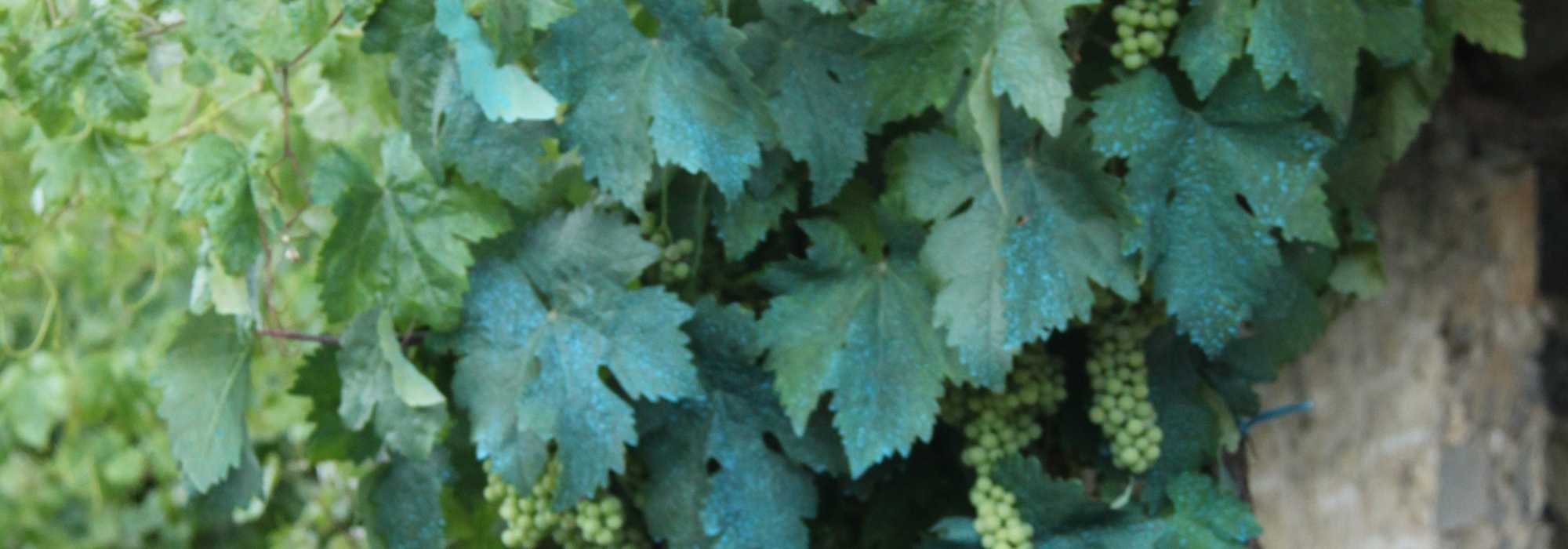
Bordeaux mixture and other copper-based treatments in the garden
Everything you need to know to use them properly
Contents
Bordeaux mixture is a copper-based fungicidal treatment, highly effective against cryptogamic diseases caused by fungi. It is widely available commercially and comes as a blue powder to be diluted.
Bordeaux mixture acts preventively and by contact on foliage of vegetable or ornamental plants or on tree bark, preventing germination of fungal spores and multiplication of pathogenous bacteria responsible for diseases such as dreaded downy mildew.
This treatment does not penetrate plant tissues (a good rinse is enough to remove it) and, together with sulphur, copper remains among products still authorised in organic farming in France. Nevertheless, it must be used sensibly and with caution as copper overuse has consequences, particularly for soil!
Here is everything you need to know about Bordeaux mixture, its usefulness in the garden and how to use it.
What is Bordeaux mixture?
Bordeaux mixture is made from copper sulfate, obtained by treating metallic copper with sulphuric acid. Copper turns blue on contact with water but is highly corrosive. In pure form it contains 25% metallic copper and must not be used on plants. Neutralised with lime, it gave rise to the famous Bordeaux mixture recipe, discovered in 1883.
It appears as a finely micronised powder, water-wettable, which contains 20% metallic copper. This copper salt has the longest-lasting effect because release of copper ions occurs slowly over about 3 weeks, provided it is not leached by rainfall.
For information, copper is sourced from ore, most often as sulphides. Major mines are located in Canada, Zambia, Democratic Republic of the Congo, Chile, Russia, etc., but the resource is becoming increasingly scarce.
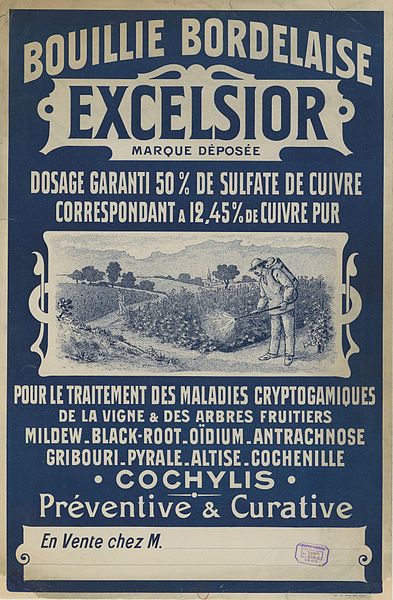
Bordeaux mixture: a traditional remedy, authorised but not without consequences
Read also
Powdery mildew or white diseaseBordeaux mixture: which garden diseases does it treat?
Copper has a broad spectrum of activity against fungi and bacteria, making it fairly commonly used in vegetable and ornamental gardens and in orchards.
Bordeaux mixture helps control:
- downy mildew of grapevine, potato and tomato,
- grey mould (botrytis) of grapevine and strawberry plants,
- brown rot of fruit trees or fruit rot (apple, pear, cherry trees…),
- leaf curl of peach, flat peach and nectarine,
- apple scab of apple and pear trees,
Note that copper helps treat diseases but can also exert a secondary action, useful for preserving fruit.

Grapevine treated with Bordeaux mixture
How does Bordeaux mixture work?
Copper-based treatments (Bordeaux mixture and others) act against infestations of fungi and bacteria. It is a contact treatment: copper remains on surface of plants and does not circulate in sap.
Bordeaux mixture acts on two levels:
- as a preventive measure: it inhibits germination of fungal spores but does not destroy the fungus once it has germinated and established itself in plant tissues. Consequently, on plants considered susceptible to fungal diseases (roses, fruit trees, potato, vine, tomato), it should be applied before symptoms of disease are visible because new shoots are not protected.
- as a curative measure: copper acts on bacteria at different levels. It blocks the breathing process, slows protein synthesis and reduces membrane exchanges… which greatly reduces intensity of their attack.
Note that sulphur has roughly the same efficacy against fungi as copper but not against bacteria.
Read also
Botrytis or grey mouldWhen and how to apply Bordeaux mixture?
Use of Bordeaux mixture must be measured and carried out at the right growth periods of plants to avoid excessive treatments.
When to treat?
- In vegetable garden and ornamental garden
As seen, in vegetable garden and ornamental garden, it is important to treat plants preventively. Intervene when weather conditions (heat, humidity…) favour disease spread or, at the latest, as soon as first signs of disease appear.
- In orchard
For fruit trees, autumn and spring are key times to prevent fungal diseases. But beware: copper causes necrosis on young non-woody shoots (non-lignified), so do not carry out treatments too early in autumn! It burns pollen, so do not treat during flowering either.
For fruit trees, we therefore recommend treating:
- Before leaf fall, from August to mid-October
For apple scab, which mainly affects apple, pear and plum trees with olive-coloured spots becoming corky first on the leaves before appearing on flowers and fruit, treat just before leaf fall and a second time before bud burst. The disease is favoured by wet weather combined with mild temperatures. Thereafter treat once or twice with another natural fungicide such as horsetail decoction, which also acts curatively.
- During leaf fall, from mid-October to November
Brown rot appears as concentric pale rings on the skin of fruit. It affects apple, plum, apricot, pear, cherry, nectarine, peach, quince trees…
Copper treatment is advised during leaf fall and a second time just before bud burst.
- After total leaf fall, from December to February
To prevent peach leaf curl, a single treatment carried out just after total leaf fall or at the start of spring before bud burst on wood is sufficient. The disease is favoured by low temperatures (10–15°C) and wet weather at bud burst. Once leaves are developed they become less susceptible to infection; treatments carried out in late spring after bud opening or during summer are of no use.
Note that peach and pear trees are particularly hindered in their development by copper application. Cherry trees, apricot trees and lettuces are a little less affected, while vines, solanaceous crops (tomatoes, aubergines) and cucurbitaceous crops (squashes, melons, cucumbers) are little affected.
Finally, bear in mind that copper treatments are useful but should not be systematic or too frequent. Intervene only if disease was observed the previous year.
In practice: preparing Bordeaux mixture and applying treatment
To prepare your Bordeaux mixture, simply mix the blue powder with water in a sprayer.
Recommended doses are usually indicated on the packaging; they range from 5 grams to 25 grams per litre of water, depending on plant treated and disease targeted.
Dose can be halved if you add a wetting agent (which helps product adhere better to the plant). You can use skimmed milk (100 ml per litre of preparation) or liquid soap (10 grams per litre).
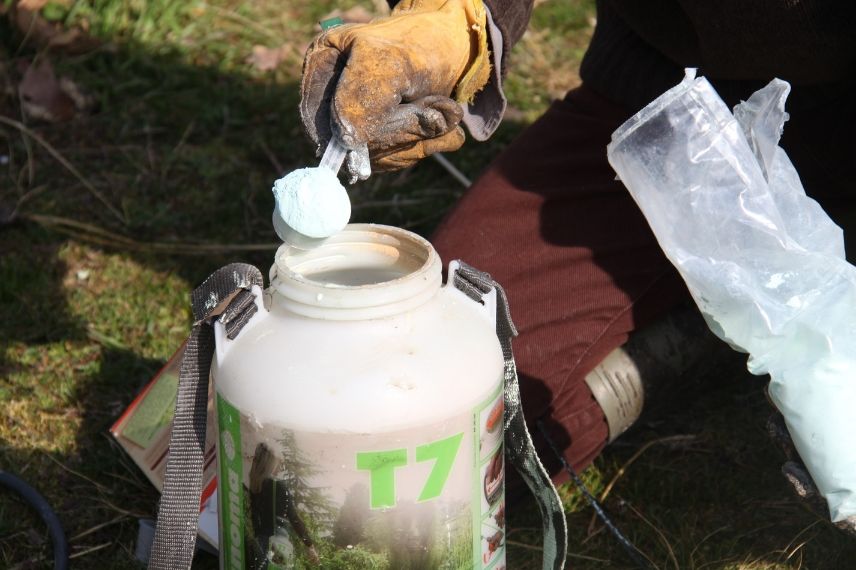
For application of the treatment, follow these basic rules:
- Protect yourself with gloves, a mask and safety goggles (just because a treatment can be used in organic farming does not mean it is not toxic)
- Spray Bordeaux mixture on a day without wind and not during hot weather,
- Only intervene when no rain is expected (a 20 mm rain leaches copper sulfate from leaf surface into the soil, which then requires a new treatment)
- Treat when foliage is dry.
In practice:
- Spray with a very fine nozzle to distribute very fine droplets over and under the leaves,
- Stop spraying at point of run-off;
- Repeat application every 15 days, if necessary.
At the end of treatment, do not pour leftover mixture into soil, into a watercourse or down the sink!
The last application of copper before harvest requires an interval of at least 21 days for vines (5 days for vegetables), regardless of copper formulation.
Bordeaux mixture, a controversial substance: alternatives
Use of Bordeaux mixture, although permitted in organic farming, is now the subject of debate, particularly for agricultural use.
Indeed, the problem is that copper is not biodegradable, it accumulates and eventually becomes toxic for soil life. This phenomenon appears beyond a certain concentration due to repeated applications over several decades. Ecologically, this results in an overall decrease in standing crop, microbial diversity and earthworms… and therefore humus.
This soil pollution seems irreversible. It is particularly problematic on agricultural soils when acidic and sandy.
Over the past twenty years, better knowledge of pathogenous cycles has made it possible to reduce the number of applications and to adapt the copper dose sufficient to prevent infestation. This marked reduction in doses has helped avoid worsening soil conditions, but nevertheless continues to pose a danger to the environment, users and potability of tap water.
In the garden, copper accumulation generally does not cause a problem but if you are sensitive to environmental issues, know that you can:
- Make better use of copper, in forms other than the traditional Bordeaux mixture,
- Replace copper with alternative fungicidal products,
First solution: make better use of copper in the garden
Although toxic at high doses, use of copper remains a reliable treatment, used for more than a century in France, even in Organic farming, partly because lack of habituation means its action retains its efficacy.
The solution to avoid its harmful side effects is to carry out measured applications at the right stages of plant growth to avoid excessive treatments.
To improve copper’s effectiveness, you can also use it in other copper-based forms
- Copper hydroxide
Copper sulphate is here treated with caustic soda to give a product with immediate effectiveness but it is more easily leached. It is less toxic for the plant’s leaves than Bordeaux mixture. It contains 50% metallic copper and its application rate* is 5 to 10 g/l depending on use.
- Copper oxychloride
Copper oxychloride is produced by treating metallic copper with hydrochloric acid and contains 50% metallic copper. It is leached a little less quickly than copper hydroxide and is also less toxic to the plant’s leaves than Bordeaux mixture. It also has the advantage of causing less staining. Its effectiveness is greater than the two other products for fighting attacks by bacteria such as bacterial canker of fruit trees. Its application rate* is 2.5 to 5 g/l.
Ultimately, if you wish to retain a copper treatment, copper oxychloride proves the most sensible choice because it acts on bacteria, which alternative treatments do not really offer at present.
*The application rate is continuously being reduced thanks to use of adjuvants such as skimmed milk or soap and to new regulations.
Among the three most commonly used copper materials, some prove more effective against certain types of diseases:
| Active ingredient | Bordeaux mixture
(Copper sulphate) |
Copper oxychloride | Copper hydroxide |
| Diseases treated most effectively |
|
|
|
New copper formulations are being marketed, which also serve as foliar fertilisers thanks to:
- their content in trace elements (Cuivrol),
- or to fungicidal plants such as horsetail, nettle, wormwood, oak bark, combined with lithothamne (rich in calcium) and copper oxychloride (Ferticuivre).
These products reduce the amount of copper applied to the plant.
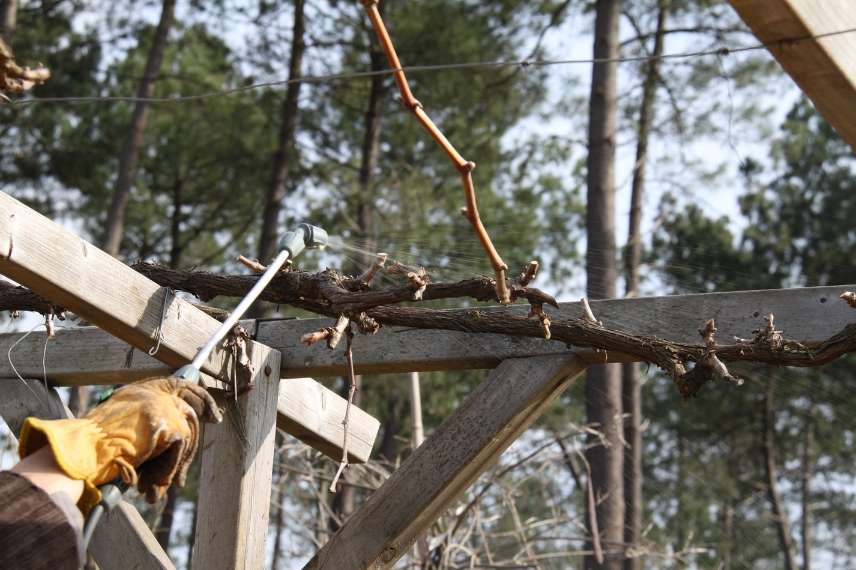
Second solution: use other fungicidal products to replace copper
There are other fungicidal products recommended in Organic and Biodynamic farming such as:
- sulphur, recommended particularly to prevent powdery mildew as well as mites,
- bicarbonate of soda, curatively on apple scab, powdery mildew of vegetables and ornamental plants (Mix 1 tablespoon of bicarbonate of soda in 4 l of water and 2 tablespoons of soap. Repeat spraying after rain.)
- calcium hydroxide, preventive and curative on cankers of fruit trees,
- decoction of willow bark as a preventive on fruit trees (powdery mildews, scab and foliar fungi),
- sunflower oil, curatively on tomato powdery mildew,
- lecithin, preventive and curative on powdery mildews of vegetables and ornamental plants, and on tomato downy mildew,
- horsetail decoction or horsetail mulch (90 g/kg of mulch), preventive and curative against most diseases (black spot and rust on roses, powdery mildew, downy mildew, moniliosis)
- nettle manure as a preventive against most diseases…
- talc as a preventive against scab…
- Subscribe!
- Contents
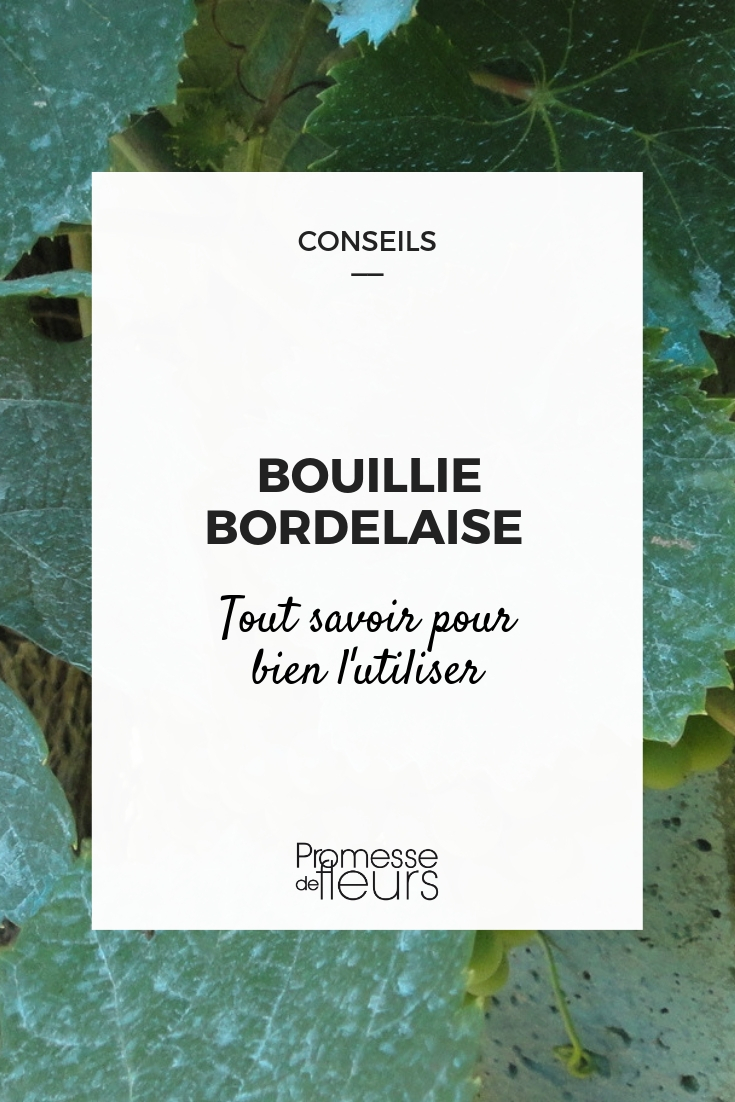































Comments